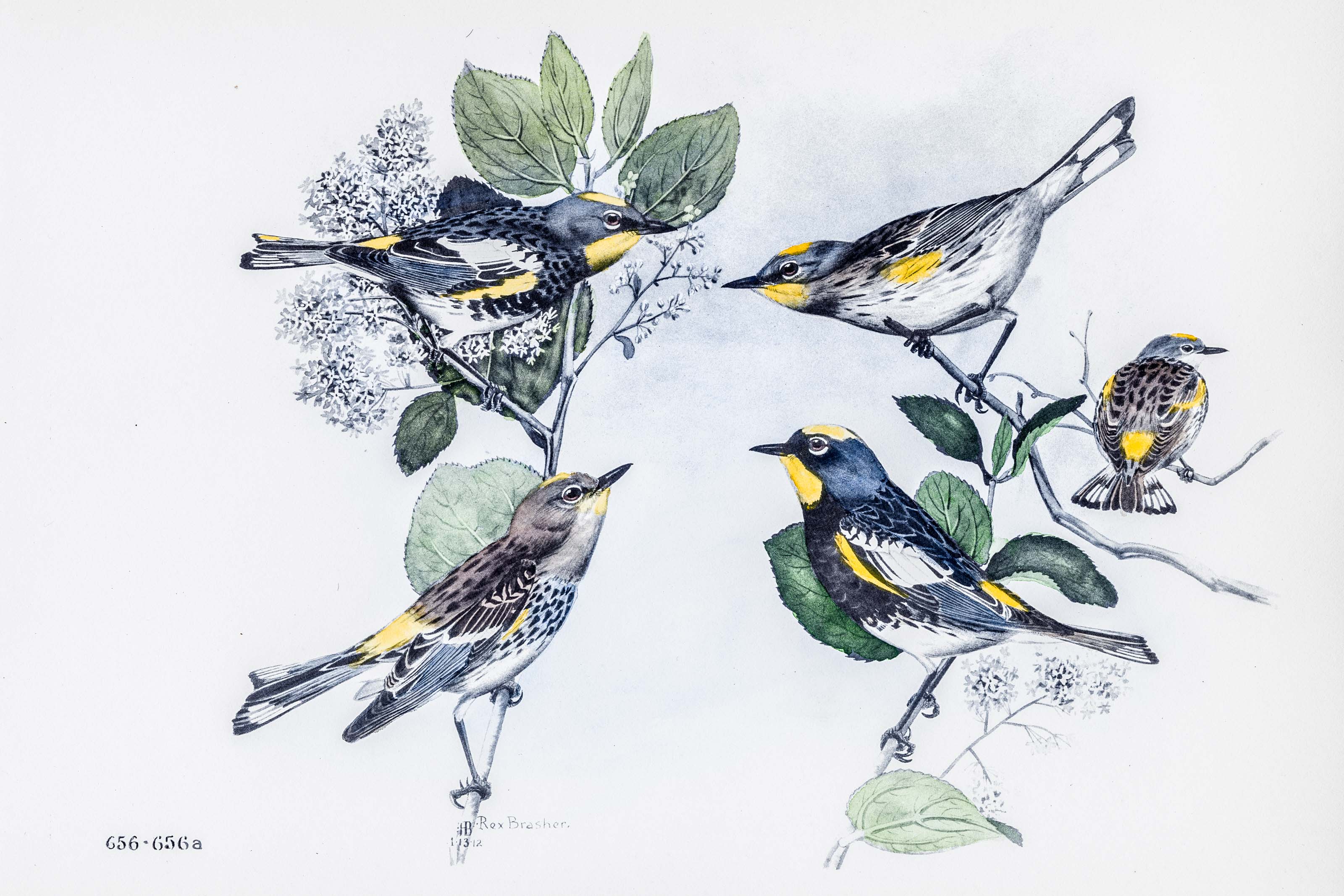
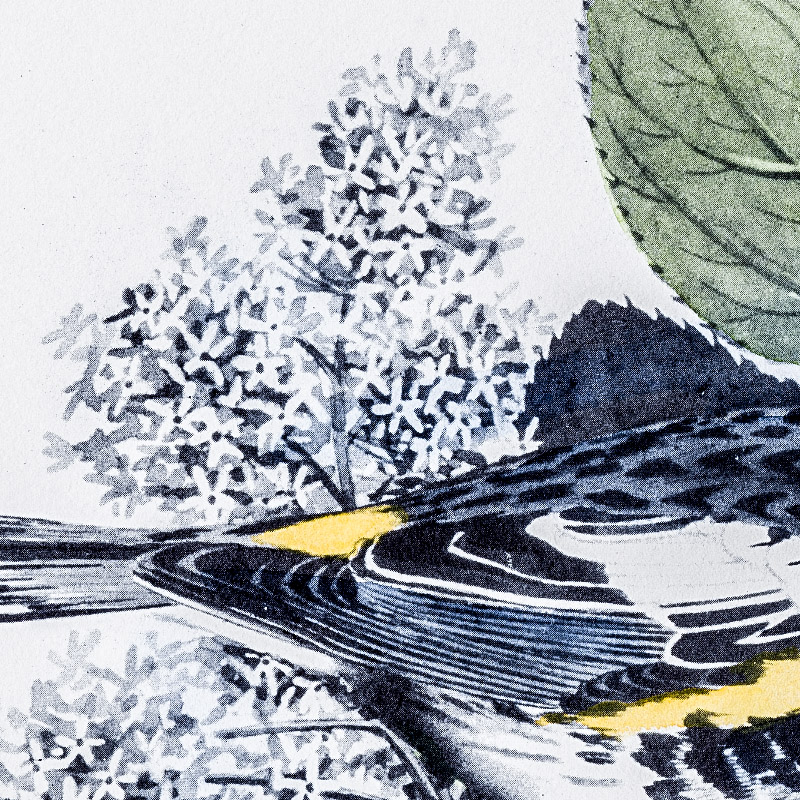
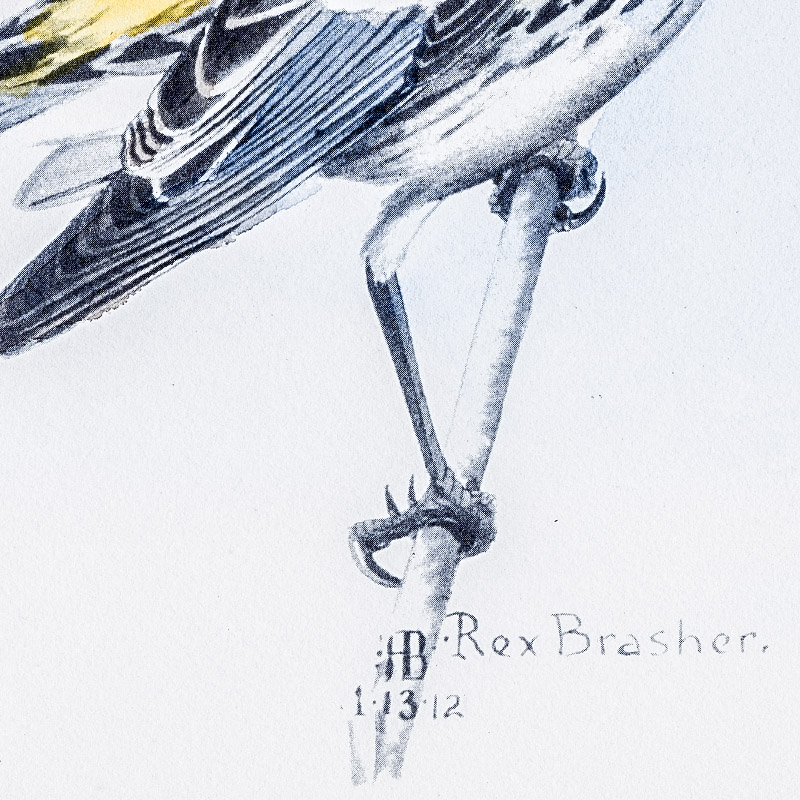
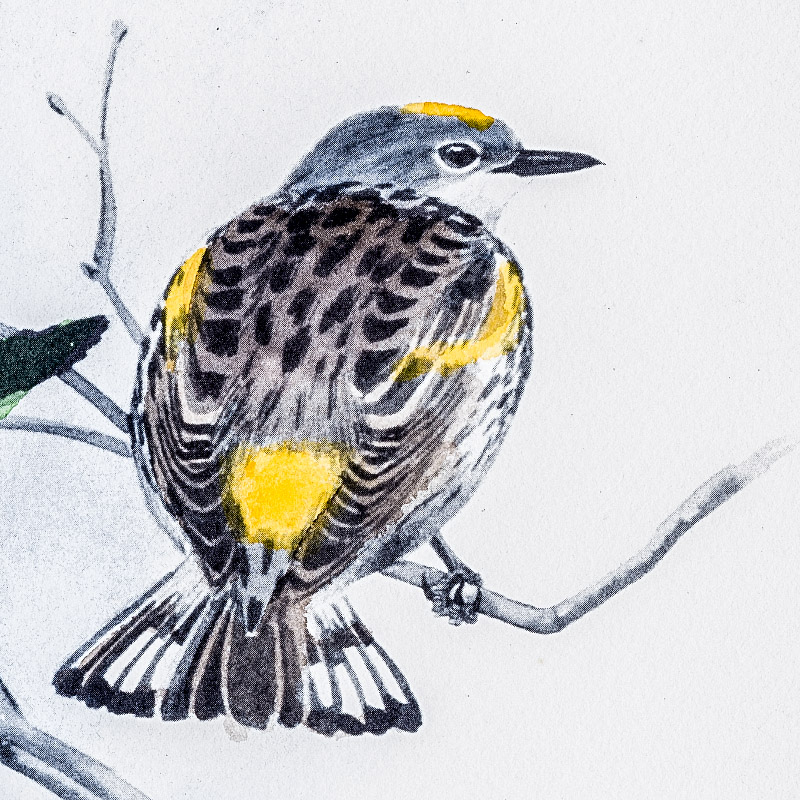
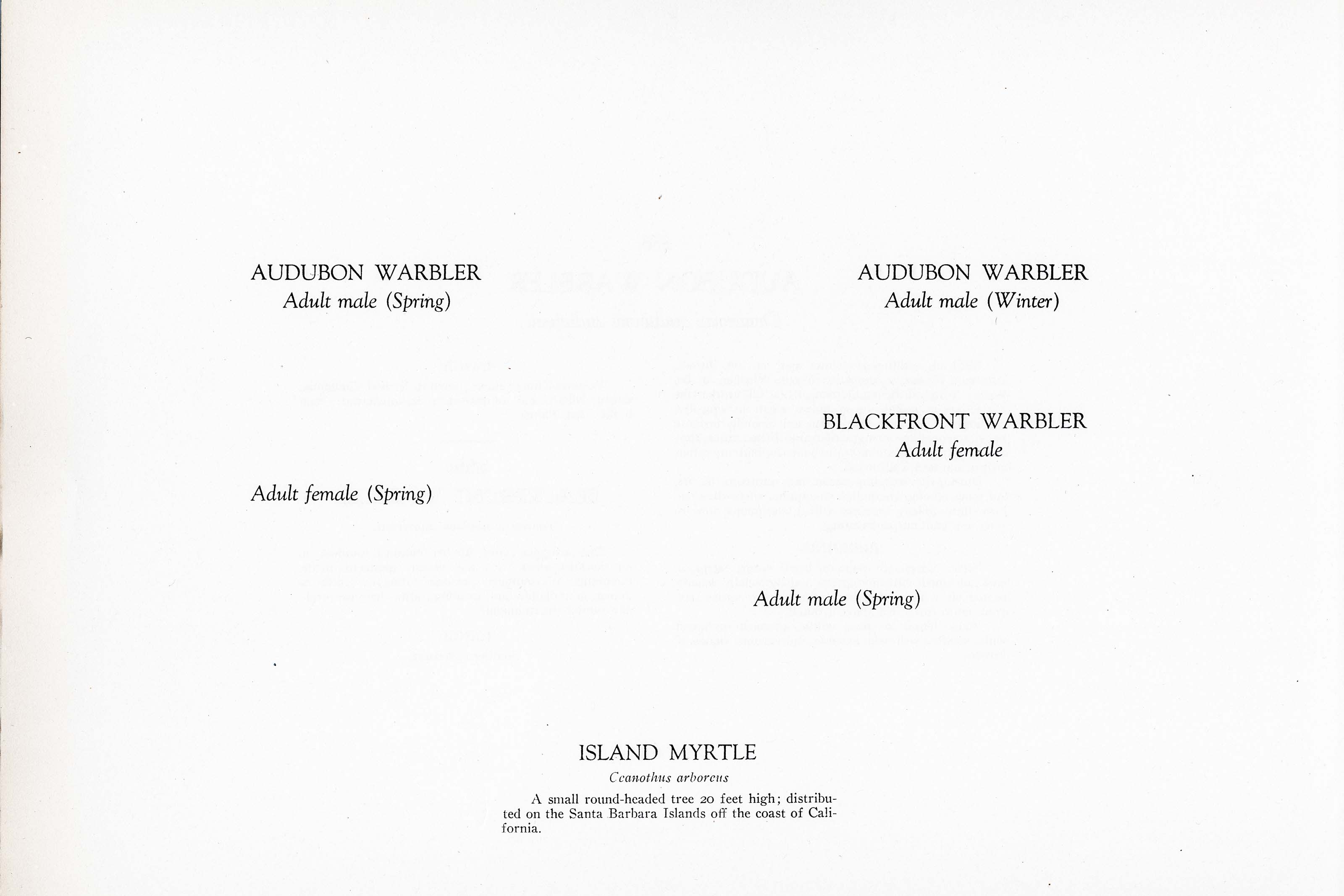
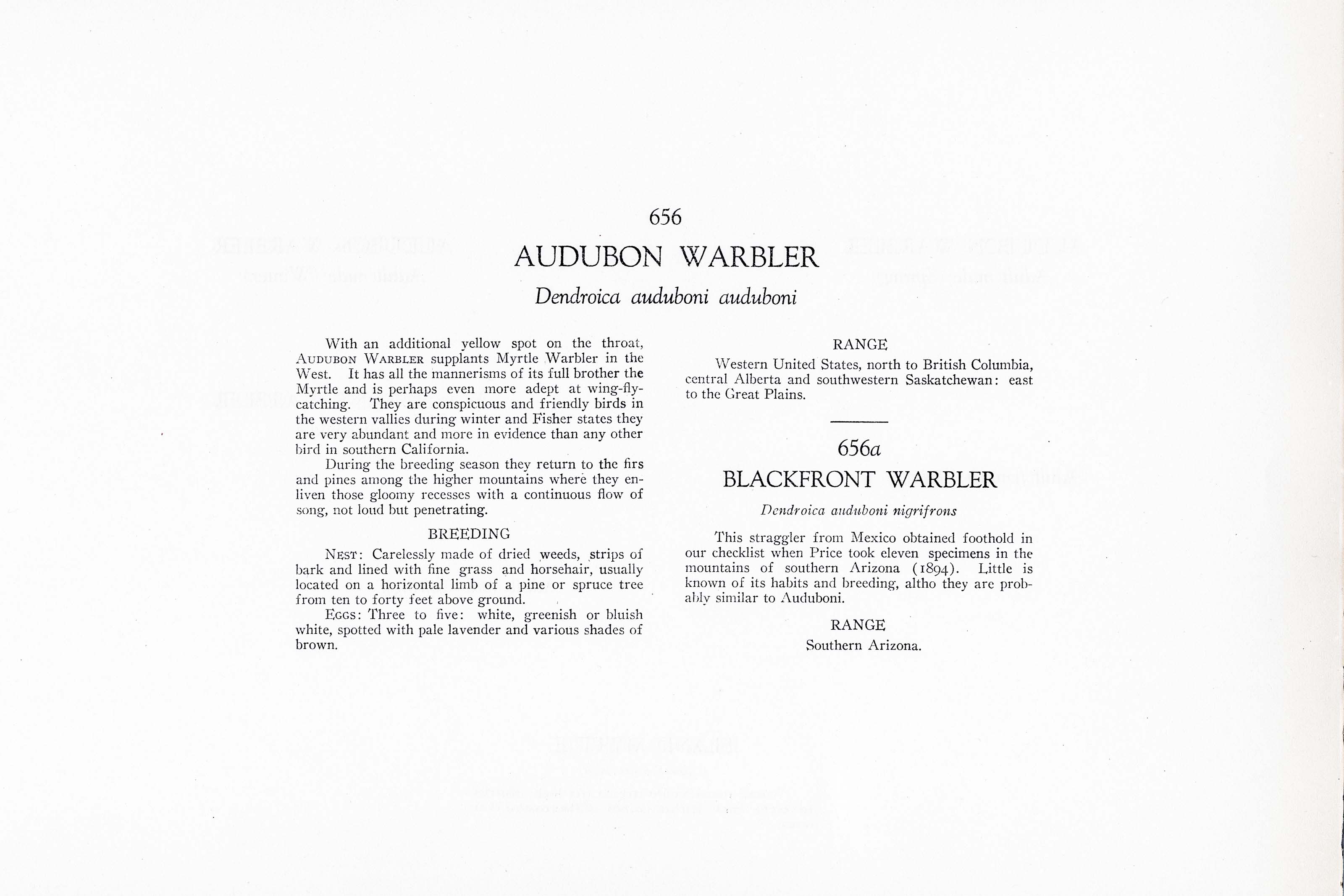

1912
1930
11
656-656a
A team of dedicated board members, volunteers, and student interns has published every page in Volume 9. This volume includes 360 images of paintings and lyrical descriptions of birds, now available online for everyone to enjoy anywhere in the world. This is a monumental task. Each volume requires approximately 400 hours to photograph, edit, transcribe, catalog, and publish online. We need your support to complete this work.
If you're tech-savvy, have a good eye, are meticulous with details, and love structured data, please consider volunteering by emailing us at hello@rexbrasher.org.
We encourage all bird lovers and supporters to consider a monetary donation to support our mission to make Rex's work available for everyone. You can provide a one-time or recurring donation online.
With an additional yellow spot on the throat, AUDUBON WARBLER supplants Myrtle Warbler in the West. It has all the mannerisms of its full brother the Myrtle and is perhaps even more adept at wing-flycatching. They are conspicuous and friendly birds in the western vallies during winter and Fisher states they are very abundant and more in evidence than any other bird in southern California.
During the breeding season they return to the firs and pines among the higher mountains where they enliven those gloomy recesses with a continuous flow of song, not loud but penetrating.
NEST: Carelessly made of dried weeds, strips of bark and lined with fine grass and horsehair, usually located on a horizontal limb of a pine or spruce tree from ten to forty feet above ground.
EGGS: Three to five: white, greenish or bluish white, spotted with pale lavender and various shades of brown.
Western United States, north to British Columbia, central Alberta and southwestern Saskatchewan: east to the Great Plains.
This straggler from Mexico obtained foothold in our checklist when Price took eleven specimens in the mountains of southern Arizona (1894). Little is known of its habits and breeding, altho they are probably similar to Auduboni.
Southern Arizona.
A small round-headed tree 20 feet high; distributed on the Santa Barbara Islands off the coast of California.